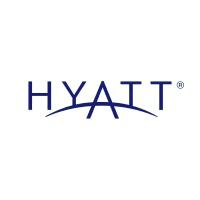
DoubleTree
How much does DoubleTree cost?
Initial Investment Range
$30,550,859 to $122,675,079
Franchise Fee
$506,375
You will establish and operate a hotel business under a Franchise Agreement with us.
Enjoy our partial free risk analysis below
Unlock the full risk analysis to access 9 more categories covering 100+ risks.
DoubleTree March 30, 2025 FDD Risk Analysis
Free FDD Library AI Analysis Date: July 16, 2025
DISCLAIMER: Not Legal Advice - For Informational Purposes Only. Consult With Qualified Franchise Professionals.
Franchisor Stability Risks
Start HereDisclosure of Franchisor's Financial Instability
Low Risk
Explanation
This risk was not identified. The audited financial statements in Exhibit C for Hilton Franchise Holding LLC (Hilton) show significant revenues, high net income, and substantial positive member's equity for the fiscal year ended 2024. The auditor's report is unqualified and contains no 'going concern' note. A financially strong franchisor is generally better positioned to support the brand and its franchisees.
Potential Mitigations
- A thorough review of the franchisor's financial statements in Exhibit C with your accountant is essential to confirm its financial health.
- Analyzing financial trends over the three years presented with a financial advisor can provide deeper insight into stability.
- Your attorney can help you understand any significant footnotes or disclosures within the financial statements.
High Franchisee Turnover
Low Risk
Explanation
This risk was not identified. The data in Item 20's tables indicates low franchisee turnover for the past three years, with a calculated rate of approximately 3.3% in 2024. Low turnover can be a positive indicator of system health and franchisee satisfaction, suggesting that franchisees are generally remaining with the brand. This is a crucial metric for assessing the long-term stability of the franchise system.
Potential Mitigations
- It is still valuable to have your accountant review the Item 20 tables to independently verify turnover rates.
- Contacting former franchisees listed in Exhibit B can provide direct insight into why they left the system, which your business advisor can facilitate.
- Your attorney can help you formulate questions for the franchisor regarding the circumstances of any terminations.
Rapid System Growth
Low Risk
Explanation
This risk was not identified. Item 20 data indicates a large, mature system with stable and methodical growth rather than rapid, potentially unsustainable expansion. Table 5 projects 21 new hotels to open in the next fiscal year, representing modest growth for a system of this size. This suggests the franchisor's resources are less likely to be strained by overwhelming support obligations for new units.
Potential Mitigations
- Reviewing the projected openings in Item 20, Table 5 with your business advisor helps in assessing the franchisor's growth strategy.
- During discussions with current franchisees, inquiring about the quality and timeliness of franchisor support can validate that growth is not straining resources.
- Your attorney can help you understand any development commitments the franchisor has that might impact future support.
New/Unproven Franchise System
Low Risk
Explanation
This risk was not identified. Item 1 indicates that the DoubleTree brand and its parent company, Hilton, have been operating and franchising for many decades. The system is mature and well-established in the highly competitive hotel industry. An unproven business model is not a concern here, as the brand has a long history and significant brand recognition.
Potential Mitigations
- A discussion with your business advisor can help you understand the competitive advantages and disadvantages of operating within such a large, mature system.
- Reviewing the corporate history in Item 1 with your attorney can provide context on the brand's evolution.
- Speaking with long-term franchisees can offer perspective on how the system has adapted over time.
Possible Fad Business
Low Risk
Explanation
This risk was not identified. The franchise is for the operation of a DoubleTree by Hilton hotel, a mainstream concept in the established and enduring hospitality industry. The business model is not based on a new or fleeting trend, which reduces the risk of a sudden decline in consumer demand due to changing tastes. Long-term viability is a characteristic of the traditional hotel sector.
Potential Mitigations
- Assessing the long-term outlook for the specific hotel segment (e.g., full-service, upscale) with your business advisor is still a prudent step.
- Your accountant can help you model financial performance based on historical industry trends rather than short-term fads.
- Understanding the brand's position within the broader hotel market can inform your investment decision.
Inexperienced Management
Low Risk
Explanation
This risk was not identified. Item 2 lists the executive officers and directors of the franchisor and its parent company. The management team possesses extensive and long-standing experience in the hospitality industry and, specifically, within the Hilton organization. This level of experience suggests a deep understanding of hotel operations and franchise system management, which is a positive factor for franchisee support and strategic direction.
Potential Mitigations
- A review of the management team's biographies in Item 2 with your business advisor can provide confidence in the leadership's capabilities.
- Inquiring with current franchisees about their interactions with and perception of the management team can offer qualitative insight.
- Your attorney can help research the public record of key executives for any additional relevant information.
Private Equity Ownership
Low Risk
Explanation
This risk was not identified. Item 1 indicates the franchisor is a subsidiary of Hilton Worldwide Holdings Inc., which is a publicly traded company (NYSE: HLT). It is not owned by a private equity firm, which mitigates concerns sometimes associated with PE ownership, such as a focus on short-term returns over long-term system health. The franchisor's decisions are subject to public company governance and reporting standards.
Potential Mitigations
- Your financial advisor can help you research the performance and strategic direction of the publicly traded parent company, Hilton Worldwide Holdings Inc.
- Reviewing public investor relations materials with your accountant can provide insight into the company's long-term strategy.
- Understanding the history of ownership detailed in Item 1, including the prior involvement of private equity, can offer valuable context with your attorney.
Non-Disclosure of Parent Company
Low Risk
Explanation
This risk was not identified. Item 1 clearly discloses the franchisor's parent companies, Hilton Domestic Operating Company Inc. and Hilton Worldwide Holdings Inc. While the parent company's financials are not provided, the franchisor entity itself appears to be sufficiently capitalized and profitable according to its own audited financial statements in Exhibit C. Therefore, a parent-level financial disclosure or guarantee does not appear necessary to establish the franchisor's viability.
Potential Mitigations
- Verifying the corporate structure described in Item 1 with your attorney is a good due diligence step.
- Your accountant's review of the franchisor's own strong financial statements in Exhibit C can provide assurance of its ability to meet obligations.
- Understanding the relationship between the franchisor and its parent companies can provide helpful context for your business advisor.
Predecessor History Issues
Low Risk
Explanation
This risk was not identified. The FDD discloses predecessor entities in Item 1. However, a review of Items 3 (Litigation) and 4 (Bankruptcy) shows no disclosed material litigation or any bankruptcies involving these predecessors. This lack of reported negative history for prior entities that operated the brand is a positive indicator and reduces concerns about inheriting unresolved systemic issues from the past.
Potential Mitigations
- A thorough review of Items 1, 3, and 4 with your attorney is still recommended to confirm the absence of any negative predecessor history.
- In discussions with long-term franchisees, you could inquire about their experience under any previous ownership structure.
- Your business advisor can help you understand the timeline of brand and entity ownership changes detailed in Item 1.
Pattern of Litigation
High Risk
Explanation
The FDD discloses that Hilton's parent company is a defendant in several industry-wide antitrust class-action lawsuits related to room pricing software. Furthermore, Hilton has concluded settlement agreements with the states of Texas and Nebraska regarding the disclosure of mandatory guest fees. This history of litigation, particularly the regulatory actions and antitrust claims, could indicate significant legal, compliance, and reputational risks for the overall system which might potentially impact your business.
Potential Mitigations
- Your attorney should review the details of all disclosed litigation in Item 3 to assess potential impacts on the franchise system.
- A discussion with your business advisor on the nature of these legal challenges is important to understand the operational context.
- Asking current franchisees about their awareness or experience related to these litigation matters could provide valuable insight.
Disclosure & Representation Risks
Example Risk: Franchisee Financial Obligations
Blue Risk
Explanation
This risk involves the financial obligations that a franchisee must meet, including initial fees, ongoing royalties, and other required payments. Understanding these obligations is crucial for long-term success.
Potential Mitigations
- Carefully review the Franchise Disclosure Document (FDD) and consult with a franchise attorney to fully understand all financial commitments before signing.
- Conduct regular risk assessments
- Implement monitoring and reporting systems
Unlock Full Risk Analysis
Purchase the complete risk review to see all 102 risks across all 10 categories.
Financial & Fee Risks
Example Risk: Franchisee Financial Obligations
Blue Risk
Explanation
This risk involves the financial obligations that a franchisee must meet, including initial fees, ongoing royalties, and other required payments. Understanding these obligations is crucial for long-term success.
Potential Mitigations
- Carefully review the Franchise Disclosure Document (FDD) and consult with a franchise attorney to fully understand all financial commitments before signing.
- Conduct regular risk assessments
- Implement monitoring and reporting systems
Unlock Full Risk Analysis
Purchase the complete risk review to see all 102 risks across all 10 categories.
Legal & Contract Risks
Example Risk: Franchisee Financial Obligations
Blue Risk
Explanation
This risk involves the financial obligations that a franchisee must meet, including initial fees, ongoing royalties, and other required payments. Understanding these obligations is crucial for long-term success.
Potential Mitigations
- Carefully review the Franchise Disclosure Document (FDD) and consult with a franchise attorney to fully understand all financial commitments before signing.
- Conduct regular risk assessments
- Implement monitoring and reporting systems
Unlock Full Risk Analysis
Purchase the complete risk review to see all 102 risks across all 10 categories.
Territory & Competition Risks
Example Risk: Franchisee Financial Obligations
Blue Risk
Explanation
This risk involves the financial obligations that a franchisee must meet, including initial fees, ongoing royalties, and other required payments. Understanding these obligations is crucial for long-term success.
Potential Mitigations
- Carefully review the Franchise Disclosure Document (FDD) and consult with a franchise attorney to fully understand all financial commitments before signing.
- Conduct regular risk assessments
- Implement monitoring and reporting systems
Unlock Full Risk Analysis
Purchase the complete risk review to see all 102 risks across all 10 categories.
Regulatory & Compliance Risks
Example Risk: Franchisee Financial Obligations
Blue Risk
Explanation
This risk involves the financial obligations that a franchisee must meet, including initial fees, ongoing royalties, and other required payments. Understanding these obligations is crucial for long-term success.
Potential Mitigations
- Carefully review the Franchise Disclosure Document (FDD) and consult with a franchise attorney to fully understand all financial commitments before signing.
- Conduct regular risk assessments
- Implement monitoring and reporting systems
Unlock Full Risk Analysis
Purchase the complete risk review to see all 102 risks across all 10 categories.
Franchisor Support Risks
Example Risk: Franchisee Financial Obligations
Blue Risk
Explanation
This risk involves the financial obligations that a franchisee must meet, including initial fees, ongoing royalties, and other required payments. Understanding these obligations is crucial for long-term success.
Potential Mitigations
- Carefully review the Franchise Disclosure Document (FDD) and consult with a franchise attorney to fully understand all financial commitments before signing.
- Conduct regular risk assessments
- Implement monitoring and reporting systems
Unlock Full Risk Analysis
Purchase the complete risk review to see all 102 risks across all 10 categories.
Operational Control Risks
Example Risk: Franchisee Financial Obligations
Blue Risk
Explanation
This risk involves the financial obligations that a franchisee must meet, including initial fees, ongoing royalties, and other required payments. Understanding these obligations is crucial for long-term success.
Potential Mitigations
- Carefully review the Franchise Disclosure Document (FDD) and consult with a franchise attorney to fully understand all financial commitments before signing.
- Conduct regular risk assessments
- Implement monitoring and reporting systems
Unlock Full Risk Analysis
Purchase the complete risk review to see all 102 risks across all 10 categories.
Term & Exit Risks
Example Risk: Franchisee Financial Obligations
Blue Risk
Explanation
This risk involves the financial obligations that a franchisee must meet, including initial fees, ongoing royalties, and other required payments. Understanding these obligations is crucial for long-term success.
Potential Mitigations
- Carefully review the Franchise Disclosure Document (FDD) and consult with a franchise attorney to fully understand all financial commitments before signing.
- Conduct regular risk assessments
- Implement monitoring and reporting systems
Unlock Full Risk Analysis
Purchase the complete risk review to see all 102 risks across all 10 categories.
Miscellaneous Risks
Example Risk: Franchisee Financial Obligations
Blue Risk
Explanation
This risk involves the financial obligations that a franchisee must meet, including initial fees, ongoing royalties, and other required payments. Understanding these obligations is crucial for long-term success.
Potential Mitigations
- Carefully review the Franchise Disclosure Document (FDD) and consult with a franchise attorney to fully understand all financial commitments before signing.
- Conduct regular risk assessments
- Implement monitoring and reporting systems
Unlock Full Risk Analysis
Purchase the complete risk review to see all 102 risks across all 10 categories.











